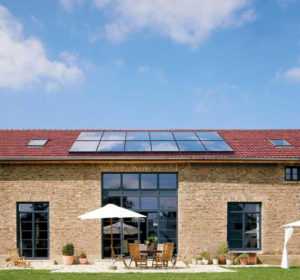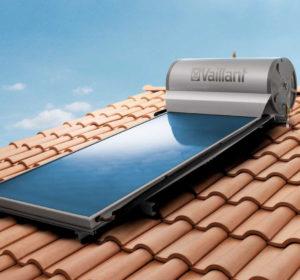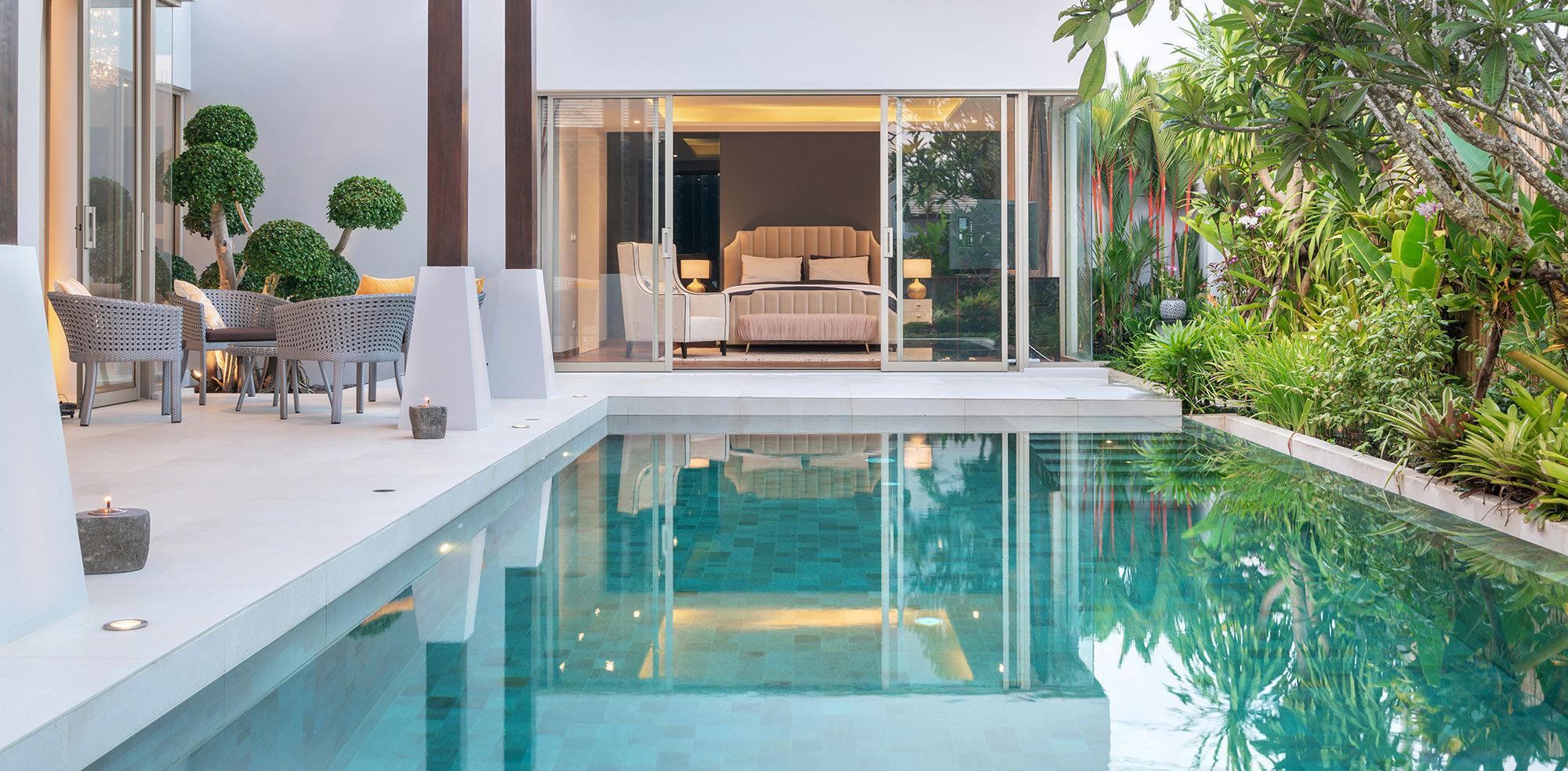Solar panels energy is an inexhaustible and free solar resource that allows us as professionals to adapt to your home for your enjoyment and savings on your bills.
This energy can be used either to heat your home, as in the case of radiators or underfloor heating by water, also for the consumption of hot water in bathrooms and kitchen or even to extend the swimming season.
As professionals we can study and advise what type of installation would be more efficient in each case by thermosiphon, drain back or forced system.
Forced solar thermal energy
In a solar thermal system with forced circulation the water circulates within the primary circuit. The difference with the thermosyphon system is that it is driven by a circulation pump.
Sometimes the location of the solar collectors is above the accumulator (for example, collectors on the roof and accumulator inside the house). When it is not feasible to install a thermosyphon system, forced solar thermal energy is the solution.
Advantages and disadvantages of forced circulation solar thermal systems
- The main advantage of forced circulation solar thermal installations is that the structure of the dwelling does not condition its location. In a solar thermal installation with thermosiphon is required to put the accumulator outdoors since it must be higher than the solar collectors. In this case, the hot water accumulator can be inside the building and outside it will only be necessary to install the solar panels.
- The possibility of placing the accumulator inside the house allows you to install a larger accumulator, is better insulated and, not being exposed to the weather, will improve its durability.
- The thermal efficiency is higher than in the solar thermal system with thermosiphon because the ability to regulate the speed of water flowing through the solar collector can be optimized to obtain the highest thermal performance in accordance with the laws of thermodynamics.
On the other hand, forced circulation systems have some drawbacks:
- The system requires the installation of a water pump to allow water circulation. The presence of the pump implies an increase in the cost of maintenance since more elements appear with the possibility of suffering breakdowns.
- The overall energy efficiency of the solar thermal system with forced circulation is lower than with the thermosyphon system. Although we explained earlier that the thermal efficiency was higher, it must be borne in mind that a certain amount of electrical energy must be invested for the operation of the water pump.
- In equipment with forced circulation, a differential thermostat is required. It is the device in charge of performing this function. The differential thermostat continuously compares the temperatures of the collector and the accumulator by connecting or disconnecting the pump depending on which temperature is higher, that of the tank or that of the plates, this last element has the advantage of only making use when necessary (higher temperature in the solar system than in the tank) and its disadvantage of having a maintenance and installation cost.

Solar energy by thermosiphon
These equipments are based on a natural circulation by convection that is formed in the fluids at different temperatures. These equipments are very efficient and profitable as long as the installation is carried out correctly. A bad installation can really make it a non-returnable investment.
These systems are the easiest way to get free hot water with great performance. It is usually installed in detached or semi-detached houses. In both cases we are offered hot water throughout the year without the cost of electricity or burning fuel.
For the correct functioning of a thermosiphon equipment it is essential that the accumulator is always located at a higher level than that of the solar collectors. There must also be two independent circuits: the primary circuit and the secondary circuit. With the primary circuit we heat the water of the tank circulating through the solar collectors and the secondary circuit gives us the capacity to store hot water in the tank.
Thermosyphon system operation
As it heats up, the water in the accumulator is stratified by temperature, i.e. the upper part is occupied by hot water and the lower part by colder water. In vertical accumulators, this temperature differential can be up to 15ºC. In horizontal accumulators, this differential drops to only 4-5ºC.

Climatization of pools
The Spanish regulation dedicated to energy efficiency prohibits us from heating swimming pools if they are not with renewable energy sources, being mandatory the use of solar energy with a contribution between 30% and 70% (depending on the climatic zone that we are).
Along with this, the ideal complement to warm up your pool is a heat pump since most of the energy used comes from outside air.

Our partners





